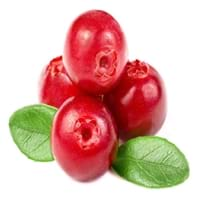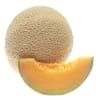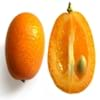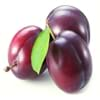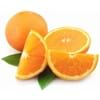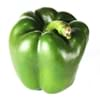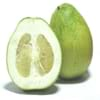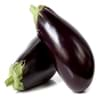Benefits
Health Benefits
Cancer prevention, Heart care, Kidney stone treatment, Scurvy treatment, Ulcer prevention
Arthritis prevention, Cancer prevention, Gout treatment, Heart care
General Benefits
Anti-inflammatory properties, Boosts immune system, Digestive aid, Fights against infections, Strengthens bones
Anti-inflammatory properties, Boosts immune system, Controls blood pressure, Controls blood sugar levels, Cures fever, Digestive aid, Sore throat treatment
Skin Benefits
Anti-aging benefits, Reduces wrinkles, Skin rejuvenation, Treatment of acne
Reduces wrinkles, Treatment of acne
Hair Benefits
Promotes longer and healthier hair, Protects hair, Treatment of dandruff
Promotes longer and healthier hair, Shiny hair
Allergy
Allergy Symptoms
Anaphylaxis, Breathing difficulty, Itching, Skin rash, Swelling of mouth, tongue or lips
Anaphylaxis, Digestive Problems, Itching, Skin Rashes, Swelling
Side Effects
Allergic reaction, Diarrhoea, Nausea, Stomach pain, Vomiting
Allergic reaction
Recommeded for
Pregnant Women
Yes
Yes
Lactating Women
Yes
Yes
Best Time to Eat
Any time except an hour after meal, Don't consume at night and before bed
As a snack in the late afternoon, Don't consume at night and before bed, Eat the fresh ones, avoid mixing with any other foods, don't eat after meal., Morning time (before lunch)
Nutrition
Serving Size
100 g
100 g
Carbs
12.20 g
39
15.23 g
26
Fiber
4.60 g
12
3.10 g
19
Sugar
4.04 g
99+
9.75 g
24
Protein
0.39 g
99+
0.36 g
99+
Protein to Carb Ratio
0.03
25
0.03
25
Vitamins
Vitamin A (Retinol)
3.00 mcg
32
1.00 mcg
36
Vitamin B1 (Thiamin)
0.01 mg
99+
0.01 mg
99+
Vitamin B2 (Riboflavin)
0.02 mg
38
0.03 mg
33
Vitamin B3 (Niacin)
0.10 mg
99+
0.16 mg
99+
Vitamin B5 (Pantothenic Acid)
0.30 mg
14
0.05 mg
99+
Vitamin B6 (Pyridoxin)
0.06 mg
30
0.03 mg
99+
Vitamin B9 (Folic acid)
1.00 mcg
34
7.00 mcg
28
Vitamin C (Ascorbic Acid)
13.30 mg
99+
4.30 mg
99+
Vitamin E (Tocopherole)
1.20 mg
7
0.12 mg
35
Vitamin K (Phyllochinone)
5.10 mcg
14
4.40 mcg
16
Lycopene
0.00 mcg
9
0.00 mcg
9
Lutein+Zeaxanthin
91.00 mcg
14
44.00 mcg
23
Choline
5.50 mg
23
5.10 mg
24
Fat
0.13 g
40
0.14 g
39
Minerals
Potassium
85.00 mg
99+
116.00 mg
99+
Iron
0.25 mg
40
0.18 mg
99+
Sodium
2.00 mg
18
1.00 mg
20
Calcium
8.00 mg
37
9.00 mg
35
Magnesium
6.00 mg
29
7.00 mg
28
Zinc
0.10 mg
23
0.10 mg
23
Phosphorus
13.00 mg
33
12.00 mg
34
Manganese
0.36 mg
11
0.05 mg
99+
Copper
0.06 mg
36
0.08 mg
27
Selenium
0.10 mcg
16
0.10 mcg
16
Fatty Acids
Omega 3s
22.00 mg
24
1.00 mg
37
Omega 6s
33.00 mg
99+
93.00 mg
20
Sterol
Phytosterol
Not Available
8.00 mg
10
Water Content
87.13 g
25
83.96 g
99+
Ash
0.20 g
99+
0.32 g
37
Calories
Serving Size
100 g
100 g
Calories in Fresh Fruit with Peel
46.00 kcal
27
57.00 kcal
19
Calories in Fresh Fruit without Peel
Not Available
Not Available
Calories in Frozen Form
42.00 kcal
21
Not Available
Calories in Dried Form
308.00 kcal
16
Not Available
Calories in Canned Form
151.00 kcal
2
Not Available
Calories in Foods
Calories in Juice
54.00 kcal
26
65.00 kcal
19
Calories in Jam
150.00 kcal
33
240.00 kcal
21
Calories in Pie
164.00 kcal
99+
282.00 kcal
27
Characteristics
Type
Berry
Tree fruit
Season
Autumn
Autumn, Summer, Winter
Varieties
Early Black, Howes, Ben Lear and Stevens
Green Anjou, Red Anjou, Bartlett, Red Bartlett, Bosc, Comice, Concorde, Forelle, Seckel and Starkrimson
Seedless Variety
No
Yes
Color
Red
Yellow
Inside Color
White
White
Shape
Round
Pear
Texture
Juicy
Grainy
Taste
Bitter, Tart
Crunchy, Sweet
Origin
North America
China, Japan
Grows on
Trees
Trees
Cultivation
Soil Type
Clay, Sandy, Well-drained
Clayey, Loamy, Sandy
Soil pH
4.5-5
5-7.5
Climatic Conditions
Warm
Cold, Hot, Without frosts
Facts
Facts about
- Europeans thought the cranberry blossom looked like the head of a sandhill crane, hence the name Cranberry.
- They are also known as bounce berries as they bounce when they ripe.
- Cranberries do not grow in water.
- The first pear tree was planted in North America in 1620.
- The Chinese considered the pear fruit to be a symbol of immortality.
- This fruit was used as a natural remedy against nausea in ancient Greece.
In Alcoholic Beverages
Wine
Yes
Yes
Beer
Yes
Yes
Spirits
Yes
Yes
Cocktails
Yes
Yes
Production
Top Producer
United States of America
China
Other Countries
Azerbaijan, Belarus, Bulgaria, Canada, Latvia, Macedonia, NA, Romania, Tunisia, Ukraine
Argentina, Belgium, India, Italy, Japan, South Africa, Spain, Turkey, United States of America
Top Importer
Europe
Europe
Top Exporter
United States of America
China
Scientific Name
Botanical Name
Vaccinium Macrocarpon
Pyrus communis
Synonym
Oxycoccus macrocarpus
Not Available
Classification
Domain
Eukarya
Eukarya
Kingdom
Plantae
Plantae
Subkingdom
Tracheobionta
Tracheobionta
Division
Magnoliophyta
Magnoliophyta
Class
Magnoliopsida
Magnoliopsida
Subclass
Dillenhidae
Rosidae
Order
Ericales
Rosales
Family
Ericaceae
Rosaceae
Genus
Vaccinium
Pyrus
Species
Vaccinium macrocarpon
P. communis
Generic Group
Heath
Rose
